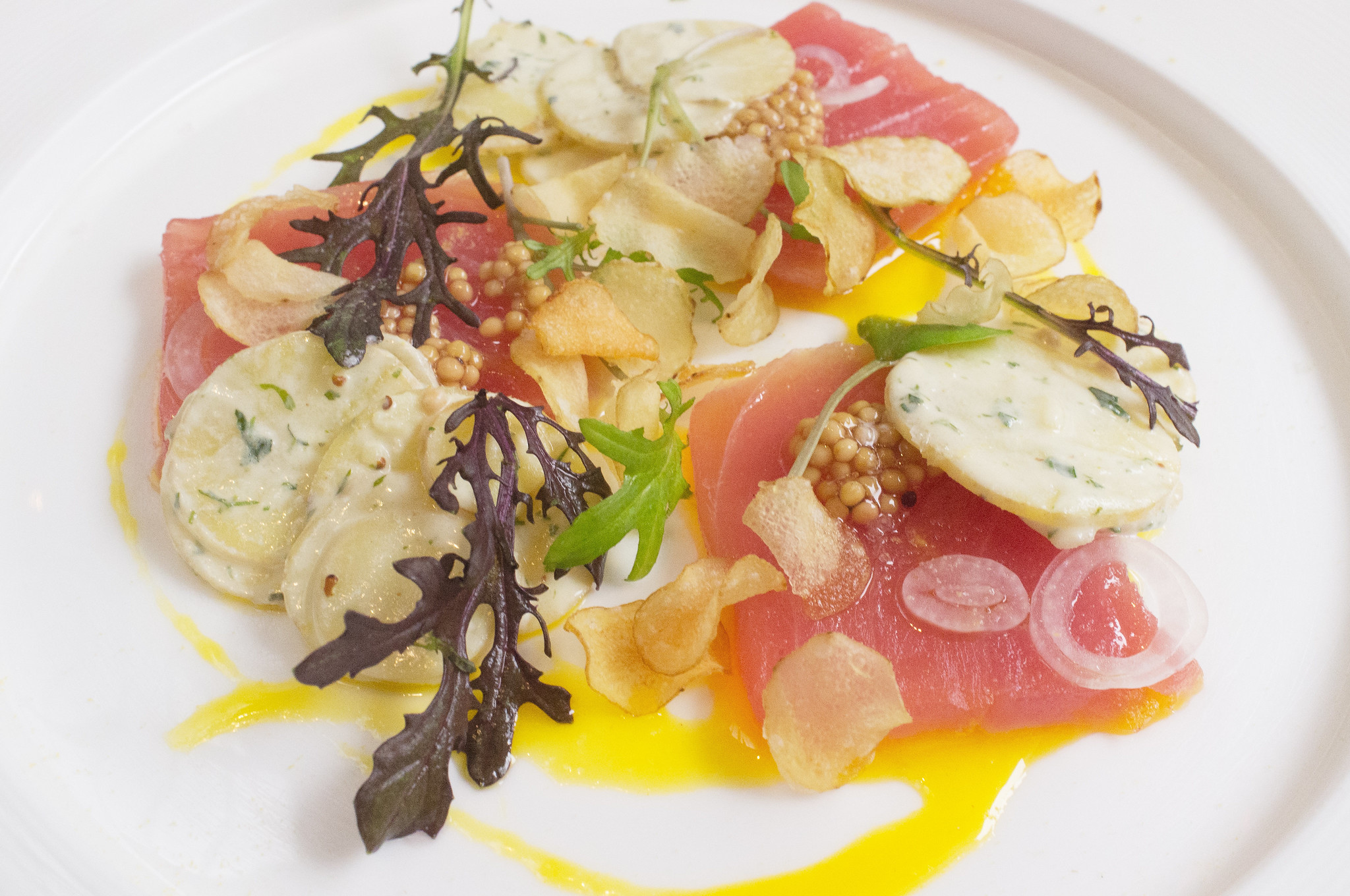Last week, the MoMA presented a new project to the public. No, it wasn’t a new exhibition, nor did it have anything to do with art. Rather, this massively influential museum took a moment to acknowledge the fact that it now grows vegetables as part of its mission. You may not find it in their mandate, but the MoMA now wishes to grow tomatoes and mustard greens.
This announcement comes directly from Abram Bissell, who stands as executive chef and director of The Modern, which is the museums high-end destination for dining. The restaurant currently boasts two Michelin stars, and offers a 7-course dinner meal which intends to “bring a sense of surprise to our meal.”
According to Bissell, who was interviewed for this project by Content Producer Lindsay Saito, this new endeavour has allowed the restaurant to go a step beyond in terms of sustainability measures. He is quick to note that there is a particular sense of joy that comes with “seeing something go from a seed to the plate." This comment shows that many chefs and diners are now eager to participate in the growing process, which was unavailable to them in the past.
So how exactly does the MoMA get these little seeds to these beautiful plates?
Well, instead of growing these plants hydroponically (where the plants are grown without soil, feeding instead off of a water-based, nutrient-rich fluid), the Modern grows their plants using aeroponics. This means that the roots are submerged in a circulating mist of water, which apparently allows for greater nutrient absorption and in turn, faster plant growth. Furthermore, as you can see from the pictures posted by the MoMA, the aeroponic system has a certain aesthetic quality to it, which I believe can draw people in and get them interested.
 |
| Aeroponic root systems grow in a cloud of mist (Source) |
 |
| A glimpse inside Canada's first fully-automated indoor farm (Photograph courtesy of Jordan Fee) |
After doing some research on the subject of aeroponics, I have discovered that this technology has been adopted by farmers in a number of countries including Bolivia, Colombia, Peru, Ecuador, Ethiopia, Kenya, Uganda, and Malawi. The same efficiencies noted earlier in this article were reported by farmers in all of these countries, and studies have shown that while the technology needed for aeroponic systems is complex, this complexity has a direct correlation with those same efficiencies. In other words, good things take hard work.
However, the system is not perfect. According to a report published by the American Journal of Potato Research in 2013, aeroponic systems are much more likely to be damaged by water or power cuts than hydroponic systems. In order to grow plants – in this case, the researchers were growing potatoes – you need a continuous source of energy. This brings us back to the MoMA, where a two Michelin-star chef sits comfortably in his well-funded institution.
While aeroponic systems are being used by farmers throughout the world, it is difficult to ignore the privilege that comes with working at the MoMA. What does it mean for a chef to use these technological systems to grow “specialty greens” when farmers around the world are using this technology to fight global hunger on a local level? While the comparison is slightly reductive, I do think it is important to think about how these technologies can be used by high-end restaurants to improve their public image and promote their branding to the world at large. Moreover, it is important to think about what it means for such a chef to tout sustainable values when he sits in his ivory tower of modern art.
 |
| A lovely (and probably expensive) plate of Cured Tuna with Potato and Egg (Source) |
Let me be clear: I am extremely happy about the fact that museums have begun to focus on sustainability in all areas of their practice. However, I do believe that the MoMA could potentially improve upon this new project by doing some outreach, showing how these technologies can do much more than grow mustard greens for a $75 plate of fish. Chefs in these kinds of restaurants can sometimes get foot-in-mouth syndrome when they begin talking about affecting change in society, as they are essentially ignoring the fact that the only people who can be changed by food such as this are those who are able to pay the $250 bill at the end of the night.
In order for the MoMA’s new project to be fully successful, it would – in my opinion – have to be extended outside of the walls of the institution. Beyond doing some outreach, they could also begin to donate funds to organizations that are actively working to combat hunger through the use of aeroponics. Doing this would show that the institution is truly invested in sustainable practices, and that this new project isn't simply a PR move meant to bring more people into The Modern.


No comments:
Post a Comment
Note: only a member of this blog may post a comment.